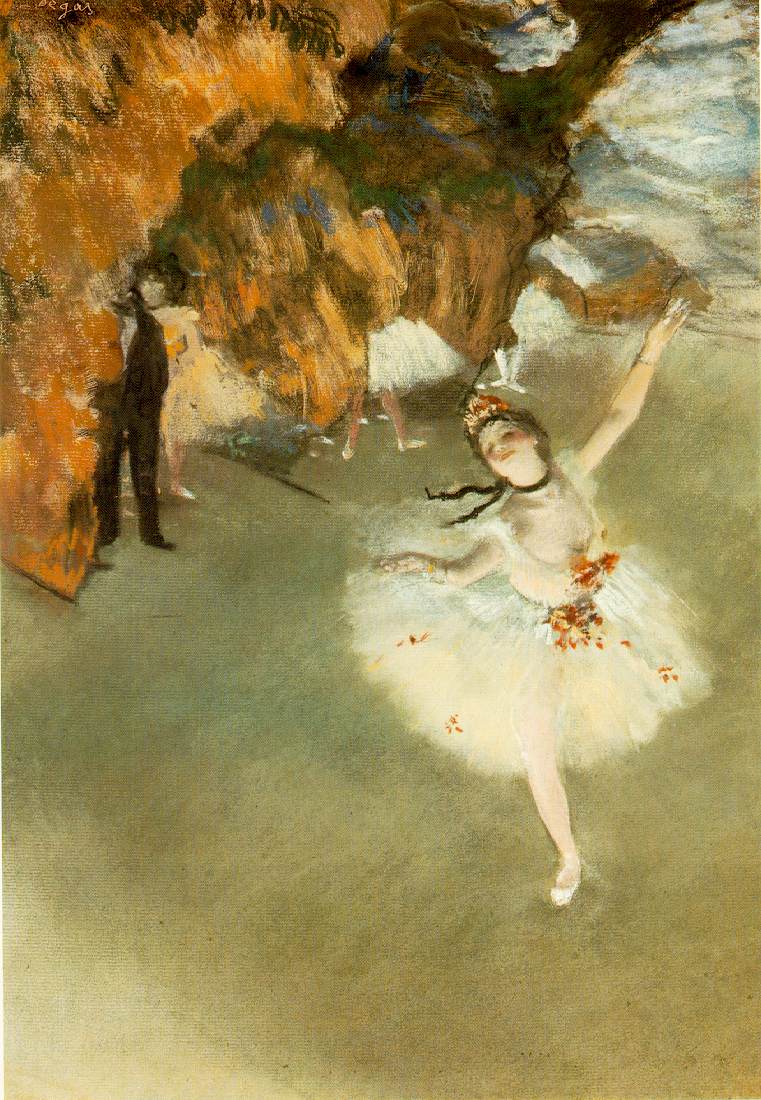
One of the more recent ideas about Degas’ nudes is that his painting style was highly influenced by early Japanese prints (ukiyo-e). Unpopular with the Academy when originally shown because they were so matter-of-fact and almost voyeuristic – in contrast to the idealized nudes in more traditional painting – Degas’ realism was quite shocking at the time. But depicting women going about their bath is a common theme in 18th century ukiyo-e, particularly in prints by Hokusai and Kiyonaga. Care is not taken to make women look beautiful in these prints – they are shown naturalistically, as if through a peep-hole, washing themselves. The same can be said of Degas’ nudes, of which there are many in this show.

It is believed that Degas had a copy of Torii Kiyonaga’s Women at Bath, shown below. Degas uses these poses in many of his paintings of nudes, for instance, compare the crouching woman in the blue and white yukata (cotton kimono) in the forefront of the print to the woman in The Tub above.

While there tends to be a lot of analysis of the stylistic influence of ukiyo-e on Degas, I actually think the subject matter of ukiyo-e is the more influential as it freed him from the typical subjects of late 19th century paintings. Degas painted the demi-monde – ballet dancers, jockeys, cafe singers – people who existed outside the realm of class structure but were patronized by the rich. Ukiyo-e depicts “the floating world” of much the same people – kabuki actors, geisha, courtesans, and sumo wrestlers. I am sure this is not a particularly new insight, but one that really stood out to me as I toured the exhibition.
- Edgar Degas at Yokohama Museum of Art, until December 31, 2010. (03) 5777-8600, 3-4-1 Minatomirai, Nishi-ku, Yokohama; 3-min. walk from Exit 3, Minamomirai Station, Minatomirai Line. 10:00 a.m.-6 p.m. (till 8 p.m. on Fri.) ¥1,500. Closed Thursday. www.degas2010.com.
- Interested in knowing more about ukiyo-e? Check out Hanga 101.
Image credits: 1. ibiblio, 2. Wikimedia, 3. Jim Breen’s Ukiyo-e Gallery

Japonism: How Japan Shaped Modern Art - Tofugu
[…] “Artist Spotlight…Dancers, Degas and the Demi-Monde in Yokohama“, Tokyo Jinja. […]
Women at bath, late 18th century | Japan Baths
[…] An ukiyo-e of a Japanese bathing scene from the late 18th century. This picture was originally posted by Tokyo Ninja. […]
Women at bath, late 18th century | Japan Baths
[…] An ukiyo-e of a Japanese bathing scene from the late 18th century. This picture was originally posted by Tokyo Ninja. […]